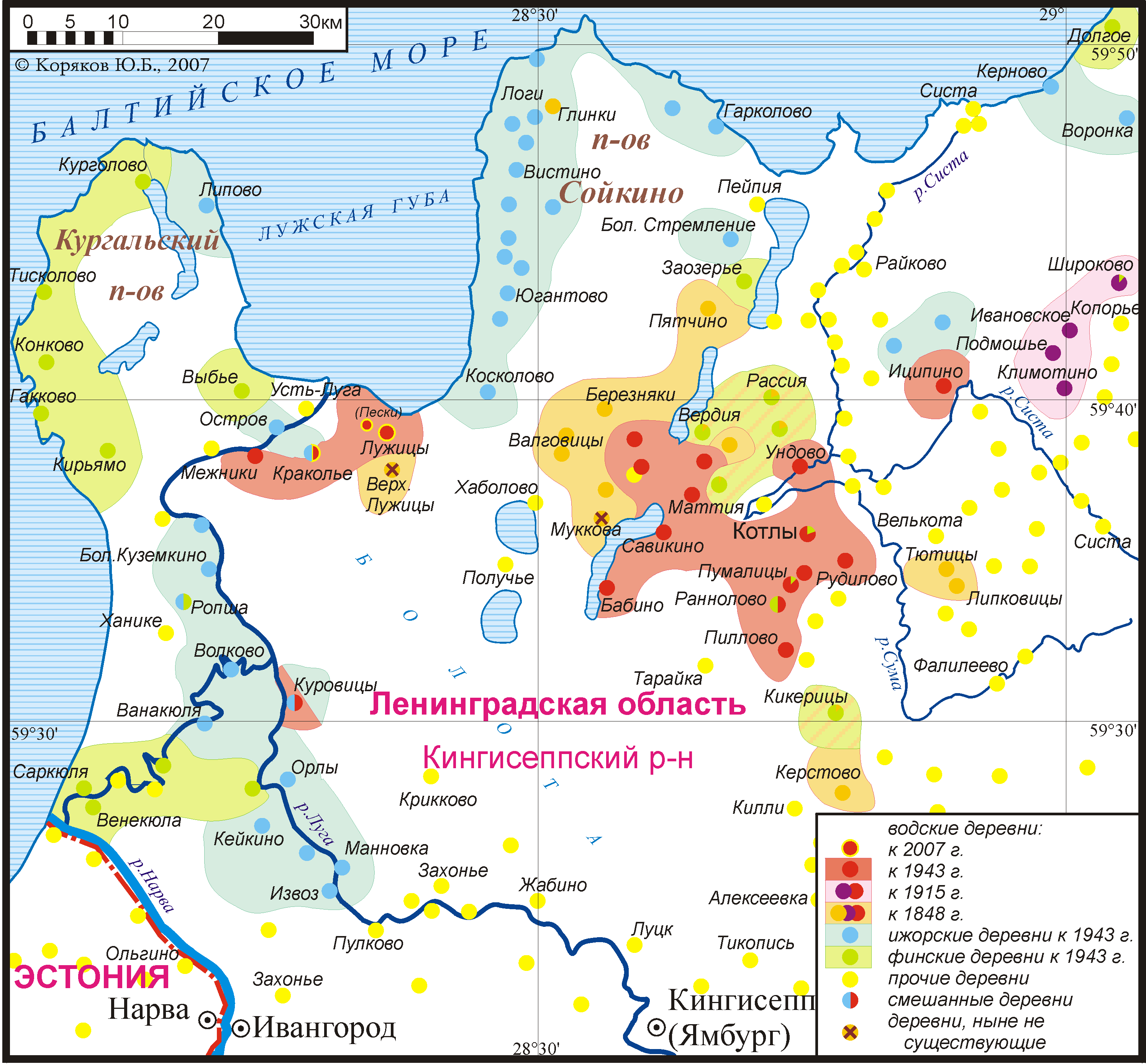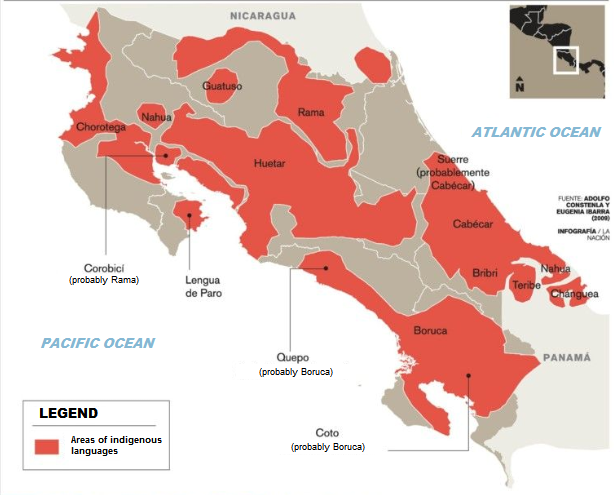|
Votic Languages
The Votic languages are a well-defined branch of Chibchan languages spoken in Costa Rica and Nicaragua. They are: *Rama language, Rama southeastern Nicaragua, moribund *Voto language, Voto Costa Rica, extinct *Maléku language, Maléku (Guatuso) north-central Costa Rica, endangered *Corobicí language, Corobicí northwestern Costa Rica, extinct References Chibchan languages Indigenous languages of Central America Languages of Costa Rica Languages of Nicaragua {{indigenousAmerican-lang-stub ... [...More Info...] [...Related Items...] OR: [Wikipedia] [Google] [Baidu] |
Votic Language
Votic, or Votian (''vaďďa tšeeli'', ''maatšeeli'') �vɑːdʔda ˈtʃɨlɨ, mɑːt.ʃɨlɨ is the language spoken by the Votes of Ingria, belonging to the Finnic branch of the Uralic languages. Votic is spoken only in Krakolye and Luzhitsy, two villages in Kingiseppsky District in Leningrad Oblast, Russia, and is close to extinction. According to Arvo Survo, in 2021 Votic had only 4 native speakers and 100 people who had some knowledge of the language. History Votic is one of numerous Finnic varieties known from Ingria. Votic shares some similarities with and has acquired loanwords from the adjacent Ingrian language, but also has deep-reaching similarities with Estonian to the west, which is considered its closest relative. Some linguists, including Tiit-Rein Viitso and Paul Alvre, have claimed that Votic evolved specifically from northeastern dialects of ancient Estonian. Votic regardless exhibits several features that indicate its distinction from Estonian (both innovat ... [...More Info...] [...Related Items...] OR: [Wikipedia] [Google] [Baidu] |
Chibchan
The Chibchan languages (also Chibchan, Chibchano) make up a language family indigenous to the Isthmo-Colombian Area, which extends from eastern Honduras to northern Colombia and includes populations of these countries as well as Nicaragua, Costa Rica, and Panama. The name is derived from the name of an extinct language called ''Chibcha'' or ''Muysccubun'', once spoken by the people who lived on the Altiplano Cundiboyacense of which the city of Bogotá was the southern capital at the time of the Spanish Conquista. However, genetic and linguistic data now indicate that the original heart of Chibchan languages and Chibchan-speaking peoples might not have been in Colombia, but in the area of the Costa Rica-Panama border, where the greatest variety of Chibchan languages has been identified. External relations A larger family called ''Macro-Chibchan'', which would contain the Misumalpan languages, Xinca, and Lenca, was found convincing by Kaufman (1990). Pache (2018) suggests a distan ... [...More Info...] [...Related Items...] OR: [Wikipedia] [Google] [Baidu] |
Chibchan Languages
The Chibchan languages (also Chibchan, Chibchano) make up a language family indigenous to the Isthmo-Colombian Area, which extends from eastern Honduras to northern Colombia and includes populations of these countries as well as Nicaragua, Costa Rica, and Panama. The name is derived from the name of an extinct language called ''Chibcha'' or ''Muysccubun'', once spoken by the people who lived on the Altiplano Cundiboyacense of which the city of Bogotá was the southern capital at the time of the Spanish Conquista. However, genetic and linguistic data now indicate that the original heart of Chibchan languages and Chibchan-speaking peoples might not have been in Colombia, but in the area of the Costa Rica-Panama border, where the greatest variety of Chibchan languages has been identified. External relations A larger family called ''Macro-Chibchan'', which would contain the Misumalpan languages, Xinca, and Lenca, was found convincing by Kaufman (1990). Pache (2018) suggests a dista ... [...More Info...] [...Related Items...] OR: [Wikipedia] [Google] [Baidu] |
Costa Rica
Costa Rica (, ; ; literally "Rich Coast"), officially the Republic of Costa Rica ( es, República de Costa Rica), is a country in the Central American region of North America, bordered by Nicaragua to the north, the Caribbean Sea to the northeast, Panama to the southeast, the Pacific Ocean to the southwest, and Maritime boundary, maritime border with Ecuador to the south of Cocos Island. It has a population of around five million in a land area of . An estimated 333,980 people live in the capital and largest city, San José, Costa Rica, San José, with around two million people in the surrounding metropolitan area. The sovereign state is a Unitary state, unitary Presidential system, presidential Constitution of Costa Rica, constitutional republic. It has a long-standing and stable democracy and a highly educated workforce. The country spends roughly 6.9% of its budget (2016) on education, compared to a global average of 4.4%. Its economy, once heavily dependent on agricultu ... [...More Info...] [...Related Items...] OR: [Wikipedia] [Google] [Baidu] |
Nicaragua
Nicaragua (; ), officially the Republic of Nicaragua (), is the largest country in Central America, bordered by Honduras to the north, the Caribbean to the east, Costa Rica to the south, and the Pacific Ocean to the west. Managua is the country's capital and largest city. , it was estimated to be the second largest city in Central America. Nicaragua's multiethnic population of six million includes people of mestizo, indigenous, European and African heritage. The main language is Spanish. Indigenous tribes on the Mosquito Coast speak their own languages and English. Originally inhabited by various indigenous cultures since ancient times, the region was conquered by the Spanish Empire in the 16th century. Nicaragua gained independence from Spain in 1821. The Mosquito Coast followed a different historical path, being colonized by the English in the 17th century and later coming under British rule. It became an autonomous territory of Nicaragua in 1860 and its northernmost part ... [...More Info...] [...Related Items...] OR: [Wikipedia] [Google] [Baidu] |
Rama Language
Rama is one of the indigenous languages of the Chibchan family spoken by the Rama people on the island of Rama Cay and south of lake Bluefields on the Caribbean coast of Nicaragua. Other indigenous languages of this region include Miskito and Sumu . Rama is one of the northernmost languages of the Chibchan family . The Rama language is severely endangered. Their language was described as "dying quickly for lack of use" as early as the 1860s . By 1980, the Rama were noted as having "all but lost their original ethnic language", and had become speakers of a form of English creole instead . In 1992, only approximately 36 fluent speakers could be found among an ethnic population of 649 individuals in 1992 . The number of speakers on Rama Cay island was only 4 in 1992. There have been several language revitalization efforts. The fieldwork for the first dictionary of Rama was done during this time by Robin Schneider, a graduate student from the University of Berlin .It is spoken in H ... [...More Info...] [...Related Items...] OR: [Wikipedia] [Google] [Baidu] |
Voto Language
Voto is an extinct Chibchan language of Costa Rica, which was spoken by the Boto people The Bota or Boto people are a tribal community found in Union territory of Ladakh. They are the third largest tribal community after Gujjars and Bakarwals in Jammu and Kashmir. According to 2011 Census of India, their population stands at 91,495. .... References {{IndigenousAmerican-lang-stub Chibchan languages Extinct languages of North America Languages of Costa Rica ... [...More Info...] [...Related Items...] OR: [Wikipedia] [Google] [Baidu] |
Maléku Language
The Maléku Jaíka language, also called Malecu, Maleku, Guatuso, Watuso-Wétar, and Guetar, is an Indigenous American language in Costa Rica. Classification The Maléku Jaíka language is a member of the Votic branch of the Chibchan language family. Maléku, or 'the speech of our people', is considered to be endangered according to ''The Endangered Languages Project''. According to the 2011 National Population Census, 67.5% of the population that lives in the official Maléku territory declared that they speak the language; however, the state of vitality varies from one village to another and even among families (Sánchez 2011). In any case, following the parameters of UNESCO, the language can be classified as definitively endangered (Sánchez 2013). History The Maleku people (usually called "Guatusos" in historical documents, travel chronicles of the 19th and 20th centuries, and in multiple academic studies) constitute one of the original peoples of the Costa Rican territory. ... [...More Info...] [...Related Items...] OR: [Wikipedia] [Google] [Baidu] |
Corobicí Language
Corobicí is an extinct Chibchan languages, Chibchan lect of Costa Rica. Many authors consider it a dialect of Guatuso; others consider it (or at least the words which are claimed to be recorded in it) as Rama language, Rama. Mason considered it a variety of the Guatuso language in a "Rama-Corobici" subfamily of Chibchan. The 1950 ''Handbook of South American Indians'' agreed that Corobici was Guatuso, but not with the subfamily classification, saying "Guatuso, with its variety Corobici or Corbesi, and Rama with its dialect Melchora, are obviously very different from each other and from other Central American Chibchan languages, and Mason (1940) was evidently in error in making a Rama-Corobici subfamily." Voegelin and Voegelin also consider it a variety of Guatuso. Tozzer considers the Guatuso descendants of the Corobici, whereas Samuel Kirkland Lothrop writes that "It is generally assumed that the Rama were once a tribe identical in language and speech with the Corobici." Consten ... [...More Info...] [...Related Items...] OR: [Wikipedia] [Google] [Baidu] |
Indigenous Languages Of Central America
Central America ( es, América Central or ) is a subregion of the Americas. Its boundaries are defined as bordering the United States to the north, Colombia to the south, the Caribbean Sea to the east, and the Pacific Ocean to the west. Central America consists of eight countries: Belize, Costa Rica, El Salvador, Guatemala, Honduras, Mexico, Nicaragua, and Panama. Within Central America is the Mesoamerican biodiversity hotspot, which extends from northern Guatemala to central Panama. Due to the presence of several active geologic faults and the Central America Volcanic Arc, there is a high amount of seismic activity in the region, such as volcanic eruptions and earthquakes which has resulted in death, injury, and property damage. In the pre-Columbian era, Central America was inhabited by the indigenous peoples of Mesoamerica to the north and west and the Isthmo-Colombian peoples to the south and east. Following the Spanish expedition of Christopher Columbus' voyages to th ... [...More Info...] [...Related Items...] OR: [Wikipedia] [Google] [Baidu] |
Languages Of Costa Rica
Costa Rica's official and predominant language is Spanish. The variety spoken there, Costa Rican Spanish, is a form of Central American Spanish. Costa Rica is a linguistically diverse country and home to at least five living local indigenous languages spoken by the descendants of pre-Columbian peoples: Maléku, Cabécar, Bribri, Guaymí, and Buglere. Immigration has also brought people and languages from various countries around the world. Along the Atlantic Ocean in Limón Province, inhabited primarily by Afro-Caribs, an English-based creole language called Mekatelyu or Patua is spoken to varying degrees, as is English; many older Limonenses speak English as their native language. The Quakers community, who settled in Monteverde in the early 1950s, speaks an older dialect of English, using ''thou'' instead of ''you''. Costa Rican Sign Language is also spoken by the deaf community, and Costa Rican Spanish slang is known as "pachuco". Since 2015 Costa Rica is officially know ... [...More Info...] [...Related Items...] OR: [Wikipedia] [Google] [Baidu] |

